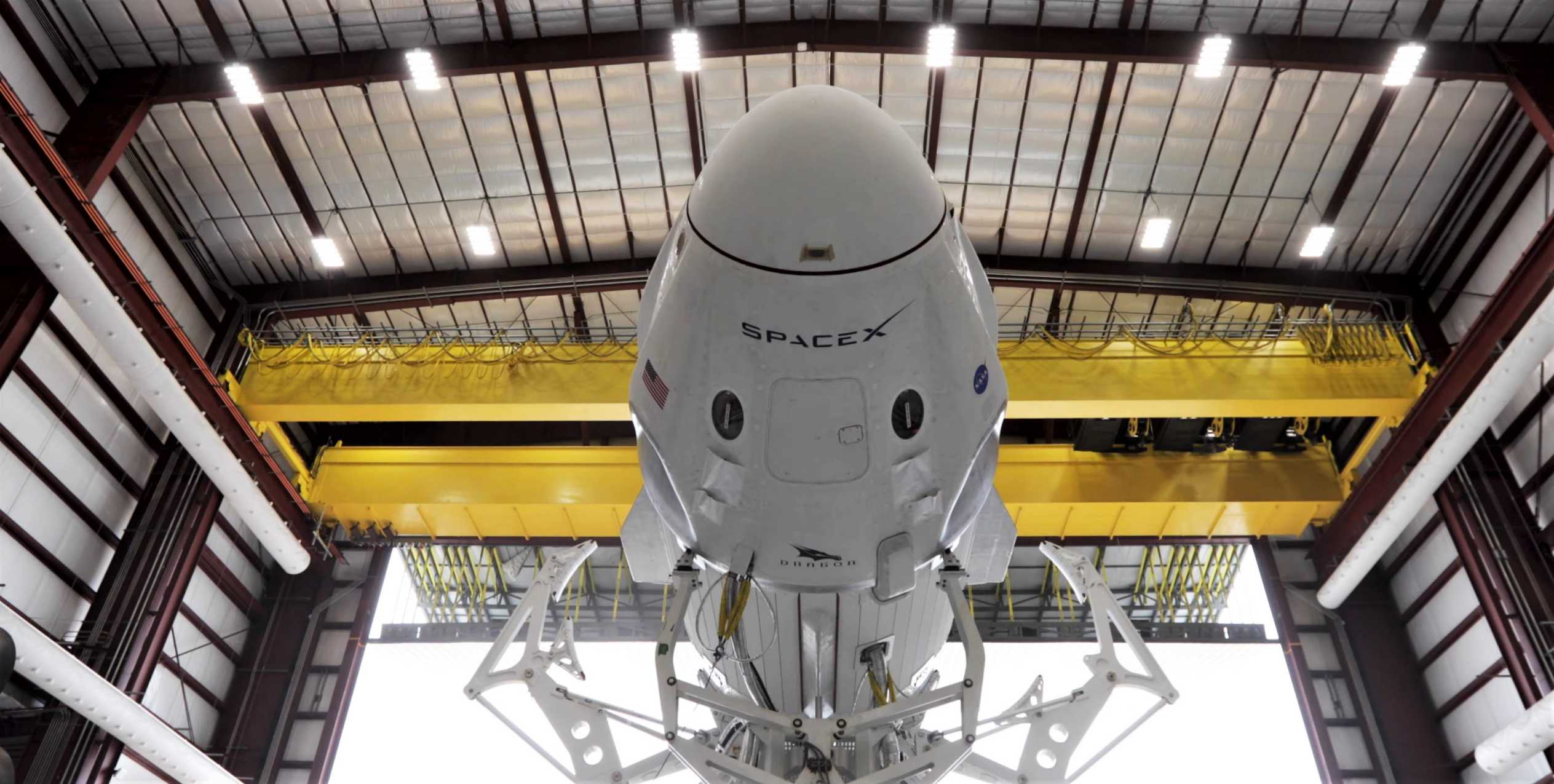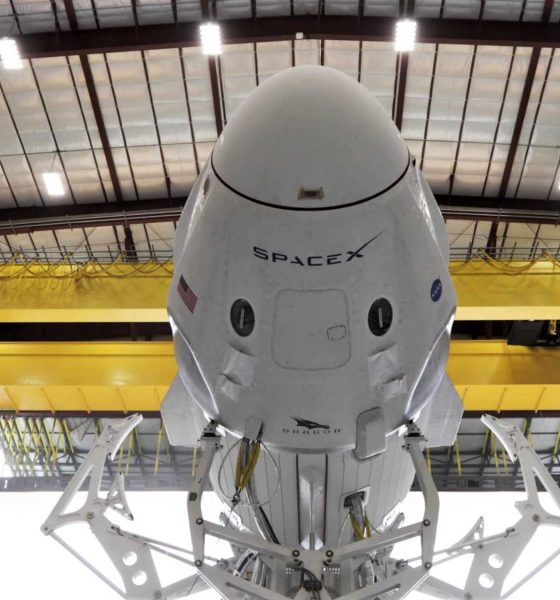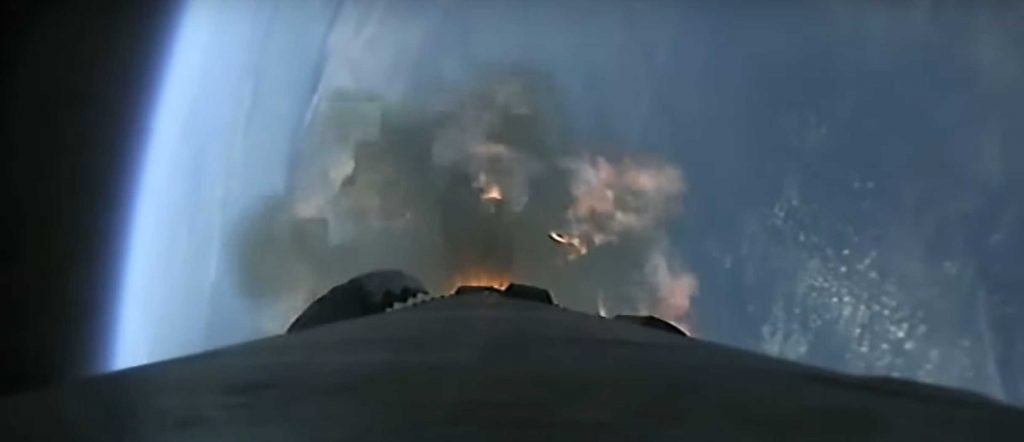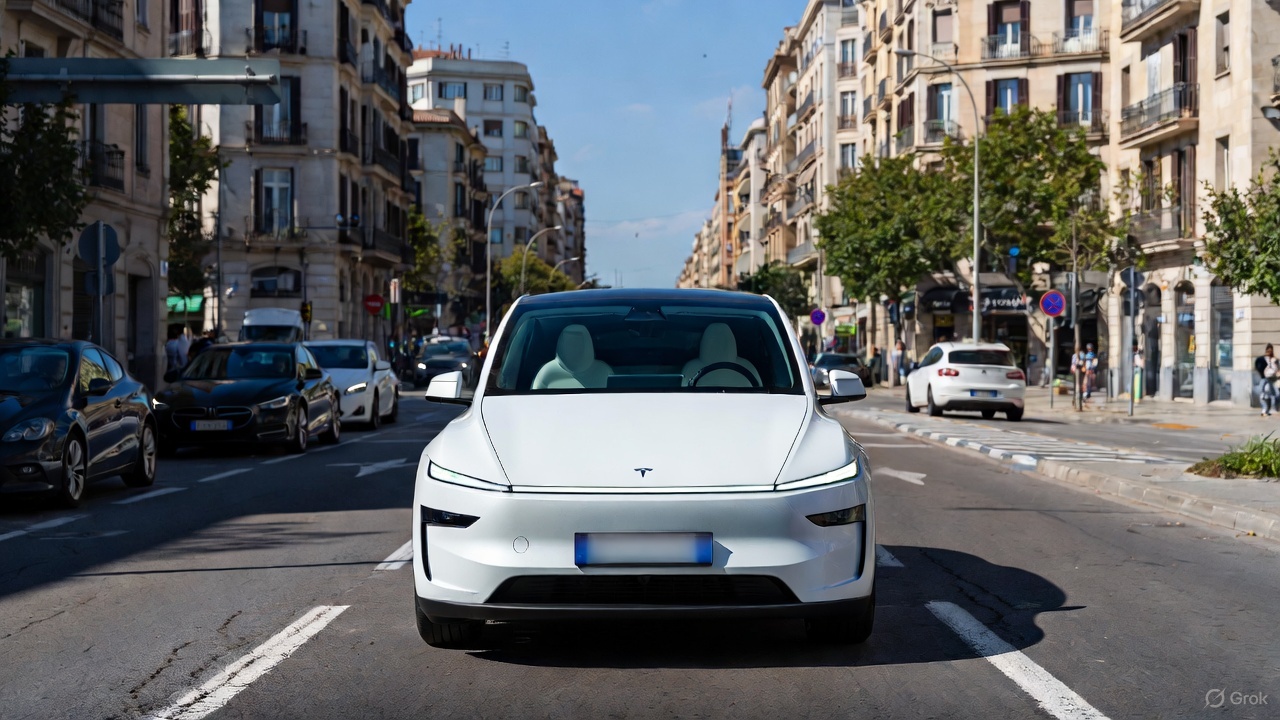

News
SpaceX, NASA hold press conference, historic astronaut launch clears final hurdles before readiness
With less than a month to go before the historic first crewed flight – and final human rating certification test – of the SpaceX Crew Dragon Demonstration 2 mission, NASA and SpaceX jointly held a full day of pre-mission press conferences on Friday, May 1st. Throughout the day many minor, but crucial, details were revealed.
Two primary technical concerns remained prior to Crew Dragon’s debut astronaut mission- the final drop test of the Crew Dragon Mark III parachutes and NASA’s clearance of SpaceX’s resolution of an in-flight engine-out anomaly suffered during the ascent phase of a previous Starlink mission.

Falcon 9 Merlin 1D engine-out anomaly
During the March 18th Starlink launch of a four-time flown Falcon 9 first-stage booster, a brief anomalous engine flare was witnessed during the ascent. Although ultimately successful in the deployment of the stack of 60 satellites, the first-stage booster failed to stick the landing aboard the autonomous spaceport drone ship “Of Course I Still Love You” resulting in a total loss. SpaceX CEO, Elon Musk, responded to comments posted to Twitter confirming the in-flight, early shutdown anomaly of one of the nine Merlin 1D engines.
Musk provided assurance that a thorough investigation would be conducted by SpaceX prior to any return to flight. Musk also noted that the first-ever engine failure of a Merlin 1D engine proved its robustness and the importance of redundancy provided by the other eight engines.
Just prior to the next Starlink mission on April 22nd marking a recycled Falcon 9 booster’s return to flight, Musk once again took to Twitter to provide insight into the early shutdown, in-flight anomaly. Musk stated that a small amount of isopropyl alcohol, used for cleaning the Merlin 1D engines, had been trapped in a sensor dead leg – later clarified as “an area it couldn’t float through” by SpaceX webcast host Lauren Lyons – and was ignited during flight causing the early shutdown of one Merlin 1D engine.
As identified during the April 22nd launch broadcast, out of an abundance of caution SpaceX decided to forgo that cleaning process for the April 22nd mission. However, no information was divulged regarding NASA’s response to either the anomaly or the resolution. Ultimately, the first stage Falcon 9 booster of the Starlink-6 performed flawlessly and even managed to stick the landing aboard the awaiting drone ship.
During Friday’s Commercial Crew and International Space Station overview news conference, a question regarding NASA’s response to the anomaly posed by Jeff Foust – reporter for SpaceNews.com – was directed to NASA’s Commercial Crew Program program manager, Kathy Lueders. She was asked to expand on the final technical constraints remaining prior to the launch of the Crew Dragon DM-2. Lueders responded positively stating that NASA had “reviewed the anomaly resolution…and cleared the engines on our launch vehicle” referring to the Falcon 9 booster slated to support DM-2, noting that the engine-out issue had been satisfactorily resolved and is now behind them.
One more drop test
Early in Friday’s Commercial Crew and International Space Station overview news conference – and later confirmed during remarks made by Lueders – SpaceX Chief Operating Officer, Gwynne Shotwell noted that a final 27th drop test of the Crew Dragon Mk III parachutes was scheduled to be completed later in the day. During a later Q&A interview with the crew of DM-2 – NASA astronauts Bob Behnken and Doug Hurley – Hurley commented that the final drop test had begun, however, he wasn’t quite sure if it had been completed successfully or not.
Just after the closing remarks of the crew Q&A interview, SpaceX announced via social media the successful completion of the 27th and final drop test of the all-important Mk III parachutes.
The May 1st final parachute drop test followed a worrisome stumble of the parachute program on March 24th. SpaceX announced that a Crew Dragon test article had become unstable forcing the helicopter pilot to prematurely release the test article out of an abundance of caution to maintain the safety of the helicopter crew. SpaceX noted that “while the test article was lost, this was not a failure of the parachute system and most importantly no one was injured.”
The confirmation of the successful May 1st drop test and the resolution of the Merlin 1D engine anomaly close out one of the final chapters of prerequisites prior to returning human spaceflight to American soil.
The only hurdles that remain to be cleared are various agency-level readiness reviews. According to Lueders, a SpaceX Flight Readiness Review is tentatively scheduled for Friday, May 8th followed by a NASA Flight Readiness Review on May 11th. Just one week ahead of launch, the final joint Launch Readiness Review is tentatively scheduled to be completed Wednesday, May 20th at which point DM-2 will bring crewed astronaut spaceflight back to American soil for the first time in nearly a decade.
Check out Teslarati’s newsletters for prompt updates, on-the-ground perspectives, and unique glimpses of SpaceX’s rocket launch and recovery processes.

News
Tesla Full Self-Driving (FSD) testing gains major ground in Spain
Based on information posted by the Dirección General de Tráfico (DGT), it appears that Tesla is already busy testing FSD in the country.

Tesla’s Full Self-Driving (Supervised) program is accelerating across Europe, with Spain emerging as a key testing hub under the country’s new ES-AV framework program.
Based on information posted by the Dirección General de Tráfico (DGT), it appears that Tesla is already busy testing FSD in the country.
Spain’s ES-AV framework
Spain’s DGT launched the ES-AV Program in July 2025 to standardize testing for automated vehicles from prototypes to pre-homologation stages. The DGT described the purpose of the program on its official website.
“The program is designed to complement and enhance oversight, regulation, research, and transparency efforts, as well as to support innovation and advancements in automotive technology and industry. This framework also aims to capitalize on the opportunity to position Spain as a pioneer and leader in automated vehicle technology, seeking to provide solutions that help overcome or alleviate certain shortcomings or negative externalities of the current transportation system,” the DGT wrote.
The program identifies three testing phases based on technological maturity and the scope of a company’s operations. Each phase has a set of minimum eligibility requirements, and applicants must indicate which phase they wish to participate in, at least based on their specific technological development.

Tesla FSD tests
As noted by Tesla watcher Kees Roelandschap on X, the DGT’s new framework effectively gives the green flight for nationwide FSD testing. So far, Tesla Spain has a total of 19 vehicles authorized to test FSD on the country’s roads, though it would not be surprising if this fleet grows in the coming months.
The start date for the program is listed at November 27, 2025 to November 26, 2027. The DGT also noted that unlimited FSD tests could be done across Spain on any national route. And since Tesla is already in Phase 3 of the ES-AV Program, onboard safety operators are optional. Remote monitoring would also be allowed.
Tesla’s FSD tests in Spain could help the company gain a lot of real-world data on the country’s roads. Considering the scope of tests that are allowed for the electric vehicle maker, it seems like Spain would be one of the European countries that would be friendly to FSD’s operations. So far, Tesla’s FSD push in Europe is notable, with the company holding FSD demonstrations in Germany, France, and Italy. Tesla is also pushing for national approval in the Netherlands in early 2026.
News
Tesla FSD V14.2.1 is earning rave reviews from users in diverse conditions
Tesla’s Full Self-Driving (Supervised) software continues its rapid evolution, with the latest V14.2.1 update drawing widespread praise.

Tesla’s Full Self-Driving (Supervised) software continues its rapid evolution, with the latest V14.2.1 update drawing widespread praise for its smoother performance and smarter decision-making.
Videos and firsthand accounts from Tesla owners highlight V14.2.1 as an update that improves navigation responsiveness, sign recognition, and overall fluidity, among other things. Some drivers have even described it as “more alive than ever,” hinting at the system eventually feeling “sentient,” as Elon Musk has predicted.
FSD V14.2.1 first impressions
Early adopters are buzzing about how V14.2.1 feels less intrusive while staying vigilant. In a post shared on X, Tesla owner @LactoseLunatic described the update as a “huge leap forward,” adding that the system remains “incredibly assertive but still safe.”
Another Tesla driver, Devin Olsenn, who logged ~600 km on V14.2.1, reported no safety disengagements, with the car feeling “more alive than ever.” The Tesla owner noted that his wife now defaults to using FSD V14, as the system is already very smooth and refined.
Adverse weather and regulatory zones are testing grounds where V14.2.1 shines, at least according to testers in snow areas. Tesla watcher Sawyer Merritt shared a video of his first snowy drive on unplowed rural roads in New Hampshire, where FSD did great and erred on the side of caution. As per Merritt, FSD V14.2.1 was “extra cautious” but it performed well overall.
Sign recognition and freeway prowess
Sign recognition also seemed to show improvements with FSD V14.2.1. Longtime FSD tester Chuck Cook highlighted a clip from his upcoming first-impressions video, showcasing improved school zone behavior. “I think it read the signs better,” he observed, though in standard mode, it didn’t fully drop to 15 mph within the short timeframe. This nuance points to V14.2.1’s growing awareness of temporal rules, a step toward fewer false positives in dynamic environments.
FSD V14.2.1 also seems to excel in high-stress highway scenarios. Fellow FSD tester @BLKMDL3 posted a video of FSD V14.2.1 managing a multi-lane freeway closure due to a police chase-related accident. “Perfectly handles all lanes of the freeway merging into one,” the Tesla owner noted in his post on X.
FSD V14.2.1 was released on Thanksgiving, much to the pleasant surprise of Tesla owners. The update’s release notes are almost identical to the system’s previous iteration, save for one line item read, “Camera visibility can lead to increased attention monitoring sensitivity.”
News
Tesla FSD Supervised ride-alongs in Europe begin in Italy, France, and Germany
The program allows the public to hop in as a non-driving observer to witness FSD navigate urban streets firsthand.

Tesla has kicked off passenger ride-alongs for Full Self-Driving (Supervised) in Italy, France and Germany. The program allows the public to hop in as a non-driving observer to witness FSD navigate urban streets firsthand.
The program, detailed on Tesla’s event pages, arrives ahead of a potential early 2026 Dutch regulatory approval that could unlock a potential EU-wide rollout for FSD.
Hands-Off Demos
Tesla’s ride-along invites participants to “ride along in the passenger seat to experience how it handles real-world traffic & the most stressful parts of daily driving, making the roads safer for all,” as per the company’s announcement on X through its official Tesla Europe & Middle East account.
Sign-ups via localized pages offer free slots through December, with Tesla teams piloting vehicles through city streets, roundabouts and highways.
“Be one of the first to experience Full Self-Driving (Supervised) from the passenger seat. Our team will take you along as a passenger and show you how Full Self-Driving (Supervised) works under real-world road conditions,” Tesla wrote. “Discover how it reacts to live traffic and masters the most stressful parts of driving to make the roads safer for you and others. Come join us to learn how we are moving closer to a fully autonomous future.”
Building trust towards an FSD Unsupervised rollout
Tesla’s FSD (Supervised) ride-alongs could be an effective tool to build trust and get regular car buyers and commuters used to the idea of vehicles driving themselves. By seating riders shotgun, Tesla could provide participants with a front row seat to the bleeding edge of consumer-grade driverless systems.
FSD (Supervised) has already been rolled out to several countries, such as the United States, Canada, Australia, New Zealand, and partially in China. So far, FSD (Supervised) has been received positively by drivers, as it really makes driving tasks and long trips significantly easier and more pleasant.
FSD is a key safety feature as well, which became all too evident when a Tesla driving on FSD was hit by what seemed to be a meteorite in Australia. The vehicle moved safely despite the impact, though the same would likely not be true had the car been driven manually.









